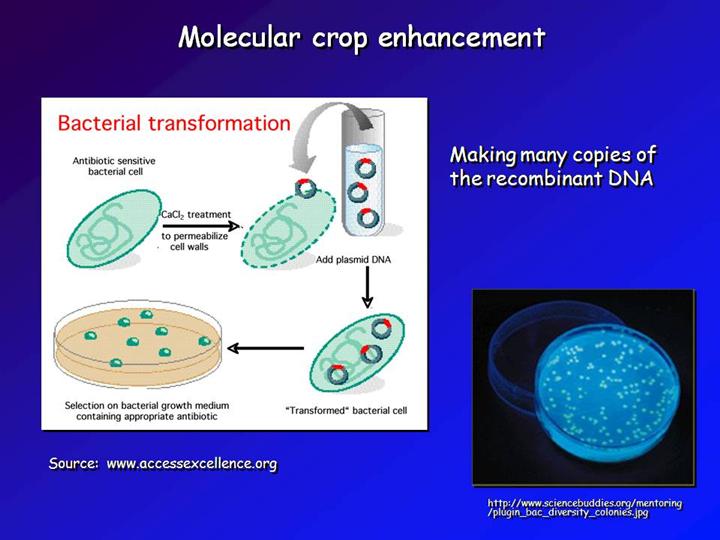| front |1 |2 |3 |4 |5 |6 |7 |8 |9 |10 |11 |12 |13 |14 |15 |16 |17 |18 |19 |20 |21 |22 |23 |24 |25 |26 |27 |review |
 |
Once the recombinant molecules are constructed, they are slipped into bacteria treated with calcium chloride to make holes in them. The bacteria recover and are then spread out on a petri dish far from each other, so that each cell, carrying just one plasmid, grows into a colony of millions of cells. On the right is what a real petri dish with colonies looks like. Each of these colonies now has many many copies of just one of the recombinant DNA molecules carrying a gene from another organism. This is called “cloning,” and it gives the biochemist enough copies of just one gene do determine its structure and what it does. Today, for example, people are treated with human insulin that is produced in just this way. A human insulin gene was inserted into a plasmid which then makes very large numbers of copies of it and in turn produces the protein it codes for. This has been a tremendous medical advance. Before recombinant insulin, people were usually treated with pig insulin, to which they sometimes developed allergies. Now people with diabetes are treated with human insulin. With diabetes a growing problem world wide, it would have been difficult to keep up with the demand if this scientific breakthrough had not happened. Source: www.accessexcellence.org http://www.sciencebuddies.org/mentoring/plugin_bac_diversity_colonies.jpg |